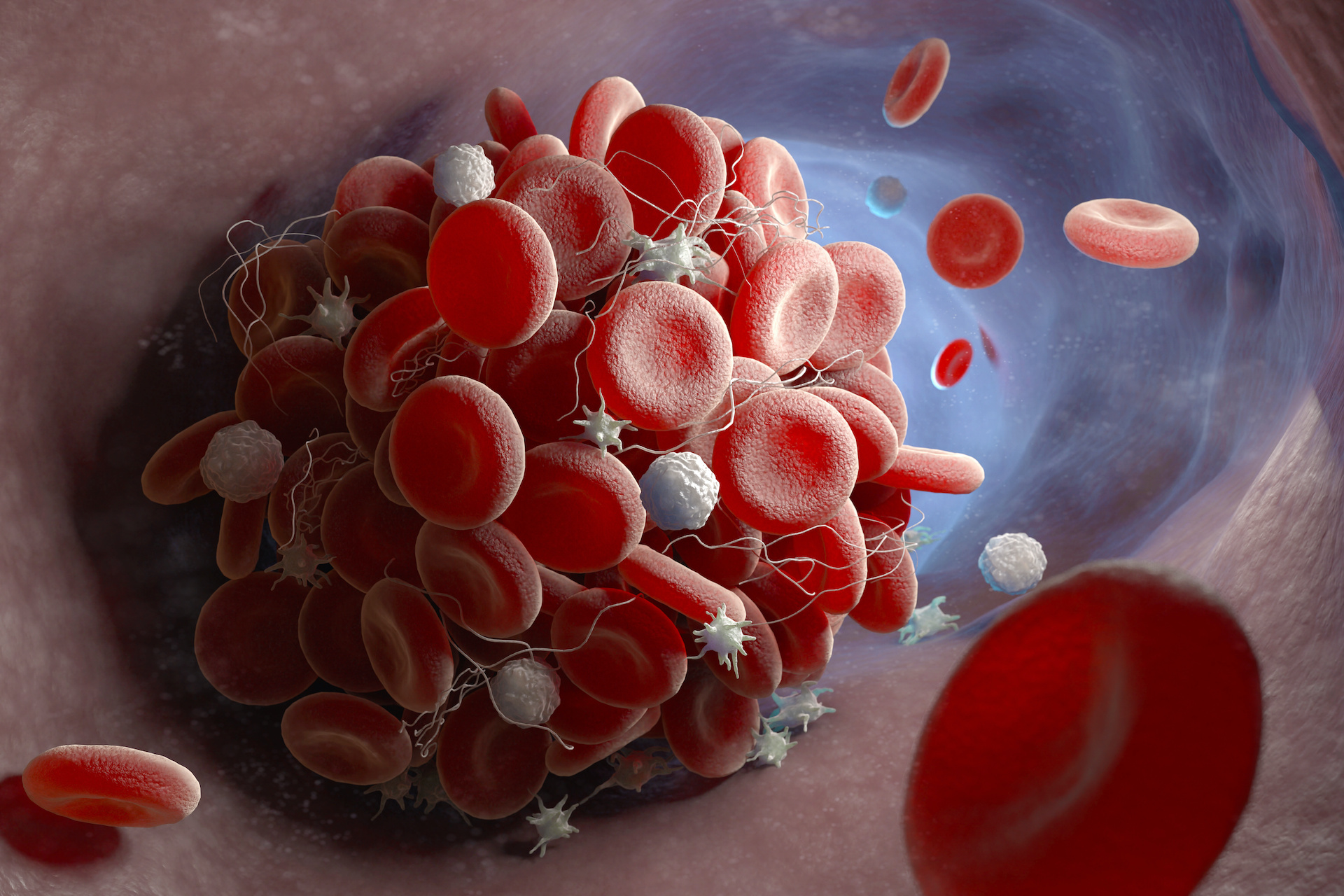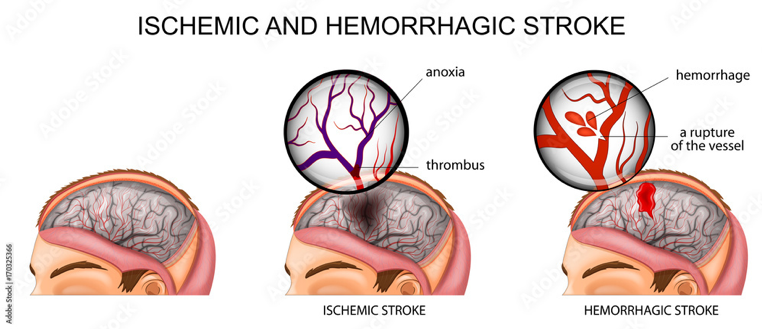THROMBOSIS
Thrombosis is the formation of a blood clot (or a “thrombus”). It prevents blood from flowing normally through the circulatory system. Blood clotting, also known as coagulation, is the body’s first line of defense against bleeding.
A stroke occurs when a blood vessel in the brain ruptures and bleeds (hemorrhagic stroke), or when there’s a blockage in the blood supply to the brain preventing blood and oxygen from reaching the brain’s tissues (ischemic stroke).

The two main forms of stroke

Hemorrhagic stroke affects 350 000 patients every year in the USA, Europe and in Japan. As a consequence of the severity of the disease and of the absence of effective treatment, 75% of AHS patients die or have severe disability
It is estimated that the number of people living with a stroke will rise by >20% within the next generation. Stroke causes large costs to healthcare budgets and societies. The costs related to stroke in Europe were recently estimated as high as €60 billion and are predicted to increase to rise to €86 billion, by 2040. 50% of stroke burden is associated to the hemorrhagic form.
To reduce the burden of stroke and address its long-term consequences, the European Stroke Organisation (ESO) and the Stroke Alliance for Europe (SAFE) published the Stroke Action Plan for Europe 2018-2030. One of the objectives of the action plan is to decrease first-month case-fatality rates to <25% for ICH, and increasing the rate of good functional outcomes to >50%. These objectives have been adopted by the company and are the driving force behind the development of O2L-001